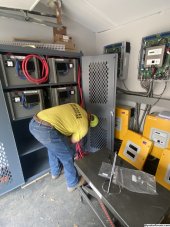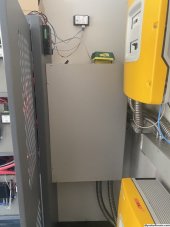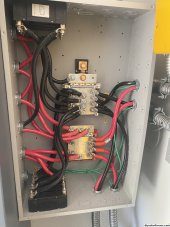Like my setup? Probably wouldn’t contain a major fire but would slow it down. Might contain a small fire though. Walls (inside to out) of power shed have 5/8 type X drywall, then 3/4 ply, then mineral wool, and then closed cell foam (not really the best for fire), and then strapping and metal.
View attachment 168766
You can get cabinets with solid doors too.
Also note the shelf reinforcement via all thread in the middle of the shelves. The manufacturer’s assessment of their shelf weight capacity rating seemed to be quite generous.
My buss bar box (MidNite Solar 2000 Amp Battery Combiner Box) is attached via “ass hole” connecters to the main cabinet.
View attachment 168768
View attachment 168770
Outside of shed:
View attachment 168771
I probably would have gone with solid doors if I had it to do over. The holes in these are big enough for mice to come through and I need to add a layer of hardware cloth to the back of the cabinet doors at some point.
Now I just keep a copious supply of the highly effective green rat balls in place (the good kind found at local grain buyers/commercial bins; MFA in my case). I have a rather large supply as part of my preps. It’s one of the things often overlooked. Sanitation and pest control. But I digress.






